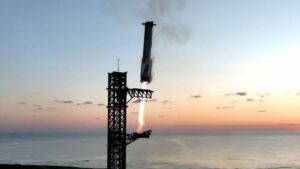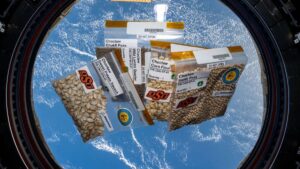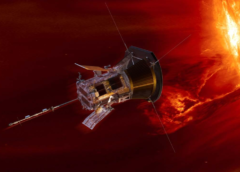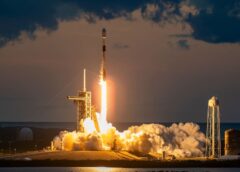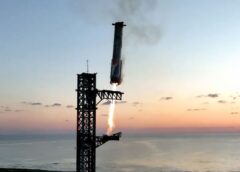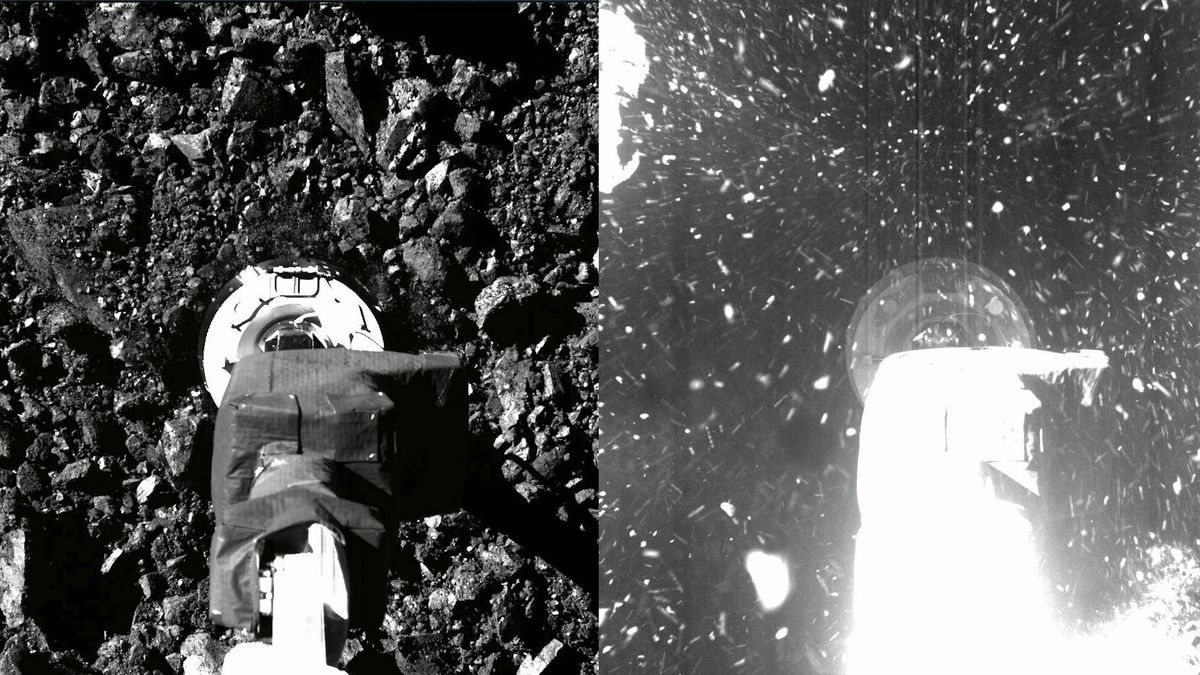OSIRIS-REx was the third mission in history to collect a sample from an asteroid and featured the most comprehensive suite of instruments ever flown on an asteroid research mission. The spacecraft’s two years of scanning the surface of asteroid Bennu and its brief sample-collection touchdown showed scientists how little they know about space rocks. Prior to OSIRIS-REx‘s 2016 launch, two other missions studied asteroids in detail: Japan’s Hayabusa 1 that delivered sand and dust grains from asteroid Itokawa to Earth in 2010; and NASA’s NEAR-Shoemaker, which explored asteroid Eros in…
Read MoreNASA Moon Camera Mosaic Sheds Light on Lunar South Pole
What if OSIRIS-REx’s asteroid-sample capsule crashes this weekend?
After seven years flying through space, a spacecraft capsule carrying a precious asteroid sample will touch down on Earth under parachutes this weekend. But what if it crashes? A crash of NASA‘s OSIRIS-REx descent capsule on Sept. 24 is “the stuff of my nightmares,” the mission’s principal investigator, Dante Lauretta of the University of Arizona, said recently. (OSIRIS-REx stands for “Origins, Spectral Interpretation, Resource Identification, Security-Regolith Explorer.”) “If that parachute doesn’t open and we’re in the ‘hard landing’ contingency, fortunately we have a backup team member who will help me…
Read MoreHow much asteroid material is NASA’s OSIRIS-REx probe delivering to Earth this weekend?
We’ll soon find out just how much asteroid dirt and rock NASA’s OSIRIS-REx spacecraft collected nearly three years ago. OSIRIS-REx‘s sample capsule is scheduled to come down to Earth on Sunday (Sept. 24), making a soft landing under parachutes in the Utah desert. That capsule is full of precious cargo — material OSIRIS-REx snagged from the surface of a 1,650-foot-wide (500 meters) near-Earth asteroid named Bennu in October 2020. Analyses of this space-rock stuff could reveal a great deal about the solar system’s early days, researchers say, and might even…
Read MoreRocket Lab suffers anomaly during launch of Earth-observation satellite
Rocket Lab suffered an anomaly during the launch of a radar Earth-observation satellite early Tuesday morning (Sept. 19). An Electron rocket carrying a synthetic aperture radar (SAR) spacecraft for the California company Capella Space lifted off from Rocket Lab‘s New Zealand site Tuesday at 2:55 a.m. EDT (0655 GMT; 6:55 p.m. local New Zealand time). The Electron’s two stages separated as planned about 2.5 minutes after launch. But something went wrong shortly thereafter, ending the flight. Related: Rocket Lab launches booster with preflown engine for 1st time (video) The launch…
Read MoreNASA Finalizes Coverage for First US Asteroid Sample Landing
The first asteroid sample collected in space by NASA will arrive on Earth Sunday, Sept. 24, and there are multiple events leading up to its landing.
Read MoreScientific Highlights of NASA Astronaut Frank Rubio’s Year in Space
NASA astronaut Frank Rubio is set to return to Earth this fall after setting the record for the longest single spaceflight by a U.S. astronaut.
Read MoreScience in Space: Week of Sept. 15, 2023 – Sleep on Station
Crew members aboard the International Space Station conducted a variety of scientific investigations during the week ending Sept. 15, 2023, including the ESA (European Space Agency) investigation Sleep In Orbit.
Read MoreThe loss of dark skies is so painful, astronomers coined a new term for it
Humanity is slowly losing access to the night sky, and astronomers have invented a new term to describe the pain associated with this loss: “noctalgia,” meaning “sky grief.” Along with our propensity for polluting air and water and the massive amounts of carbon we’re dumping into the atmosphere to trigger climate change, we have created another kind of pollution: light pollution. Most of our light pollution comes from sources on the ground. While humans have had campfires and handheld lanterns for ages, the amount of light we produce through electricity…
Read MoreA squishy robot built for Mars is helping 1st responders on Earth in rescue operations
A squishy, lightweight robot with complex sensors that can be dropped onto the moon or Mars from high above the surface one day is expected to help humanity perform science in rough terrains. Meanwhile, however, one such shape-shifting robot is helping first responders on Earth, too. The spherical device is able to remotely gauge hazards and plan an approach for these responders before they enter areas hit by disasters like wildfires, chemical spills, crashes and potentially even war zones. “We thought, wow, if we can do this on the Moon,…
Read More

